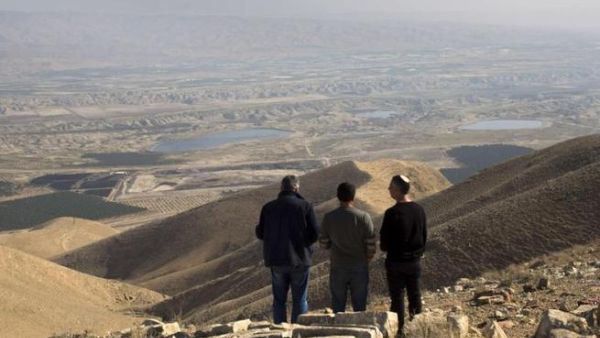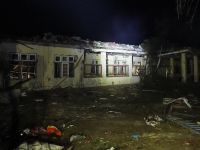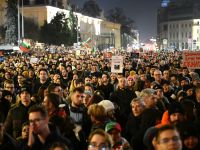The news coverage of settlement building in the Jordan Valley comes in fragments. A story of a Palestinian’s uprooted trees here, a description of harassment of farmers there, and talk of big new settlement developments forever around the corner. But an eye on the bigger picture is critical, and this is more important as the ominous American-led “deal of the century” develops.
>
Illegal Israeli settlements on Palestinian land have been one of the biggest flashpoints of the conflict after the Oslo Accords, and are seen by the international community as one of the biggest barriers to peace. But now, Israel has an unprecedented level of support in Washington, with the Trump administration making clear it wants a victory of Israeli over Palestinian interests.
This looks set to exacerbate settlement building across the West Bank. Zena Agha, a policy fellow at the Al-Shabaka think-tank told Al Bawaba:
“Settlement activity has been a constant feature in the occupied Palestinian territories irrespective of the national or international political climate. However, since the Trump administration came to power there has been an upsurge in the Israeli settlement drive. This is due directly to the carte blanche that the administration – many of whom have strong links to settler groups – has given Israel.
Not only are more and more settlements getting approved or retroactively legalised, but Israel is also brazenly targeting strategically significant parts of the Palestinian territories such as the E1 corridor between Jerusalem and the Ma’ale Adumim settlement. If Washington’s handling of ‘final status’ issues such as Jerusalem or Palestinian refugees is any indication, Trump’s elusive “peace deal” is unlikely to hold Israel to account for its settlement project.”
In the Jordan Valley in particular, the right-wing Israeli government of Benyamin Netanyahu has big plans for settlement expansion. However, the plans are not yet complete, and while they are still underway, the peacemakers need to keep watch.
The Jordan River runs all the way up the eastern border of Israel and the West Bank. However, political talk of the Jordan Valley tends to refer to the valley areas on the river’s course between the Sea of Galilee and the Dead Sea. The river valley marks the border between Jordan and Israel and the Palestinian Territories. The Jordan Valley area makes up about 30% of the West Bank. And it is the Jordan Valley’s location in this nexus of borders that makes its land critical.
Professor Laleh Khalili, an expert in the Israeli-Palestinian conflict at the School of Oriental and African Studies in London told Al Bawaba:
“The Jordan Valley matters not only because it is good agricultural land, but even more importantly, if some sort of viable Palestinian state was to ever be created, the Jordan Valley would form its Eastern border with other Arab states. In essence, the settlements here are intended to cut off any kind of border connections between a putative Palestinian state and the Arab world beyond. The encirclement of Palestinian communities into ever shrinking enclaves has been a plan of the Israeli state since 1948.”
Israeli settlements in the Occupied Territories are illegal under international law. The Israeli government is cagey about its relationship with the private companies that do the work of settlement building. But once settlements are built, the government quickly connects them to water and electricity, and has the army provide security.
And in the Jordan Valley, that security provision tends to mean Palestinian shepherds and farmers are either banned from land that they need to graze their livestock, or find the harassment from the army and from settlers so untenable that they stop coming back.
The situation is such that there is now a group of Jewish peace activists who volunteer to escort Palestinian shepherds on their grazing trips, in order to reduce the amount of harassment and danger the shepherds are subjected to. Some shepherds have said that when they try and graze alone, settlers disrupt flocks of sheep by driving quad bikes through them.
Palestinians have lost a shocking amount of land to the encroaching settlements. Israel has taken over 77.5% of land in the valley, despite the fact that there are ten times more Palestinians than Israelis living there. But the Israeli settlers themselves have profited from the situation.
Human Rights Watch reported that underage Palestinian children are regularly employed as cheap labour on the settlement farms, despite the fact that Israeli children the same age are banned from such work. The report described children working in unsafe conditions, being subject to extreme heat and dangerous chemicals, and being exhausted from their labour. However, the children told the researchers that they had no hope of finding better work elsewhere or of getting an education, and so had no choice but to continue working on the farms.
Poverty is extremely high among Palestinians in the Jordan Valley – the poverty rate is 33.5%. And many people find themselves trapped in a poverty cycle. They are forced to lease land from the settlements in order to farm, but lose income in so doing. And the net effect of these restrictions is huge. The World Bank estimates that restrictions on Palestinian freedom of movement in the Jordan Valley costs the Palestinian economy $700 million per year.

Palestinian farmers work in an onion field in the Jordan Valley on 8 January 2014 (AFP)
This number is set to get even bigger if plans for new settlements go ahead. Estimates suggest that about 4500-6000 Israelis live in the Jordan Valley. But late last year, it was announced that the Israeli government had a “development” plan for the Jordan Valley, which would see another 10,000 Israelis settled there, and new housing units built to accommodate them.
Israel has argued that the Jordan Valley settlements are a protective buffer along the Jordanian border. How these limited civilian settlements - even if they were expanded – represent military protection is anybody’s guess. But it is very much in the Netanyahu government’s interest to make the occupation of the Jordan Valley look like an irreversible status quo, whatever the justification ends up being.
The sense of urgency for the Israeli government is not surprising, since many of the current settlers in the Jordan Valley are not Netanyahu’s political bedfellows. Ofer Zalzberg, Senior Analyst on Israel-Palestine at International Crisis Group told Al Bawaba:
“The bulk of the settlers in the Jordan Valley self-define as secular and live in kibbutzim. Most of the secular settlers in the Jordan Valley vote for the Labour party which established their settlements. They tend to be receptive to relocation into Israel-proper in exchange for financial compensation, and do not participate in religiously-motivated violence.”
The Israeli government thus knows well that any claims it makes to the Jordan Valley are extremely tenuous. Israeli evacuation of the Valley would have been an inescapable part of any peace agreement under normal circumstances. But now Trump is in office, and Israel feels it doesn’t have to apologise for anything so long as he stays there.
This is a window that Israel will use to go after as much of the Jordan Valley as it can.







